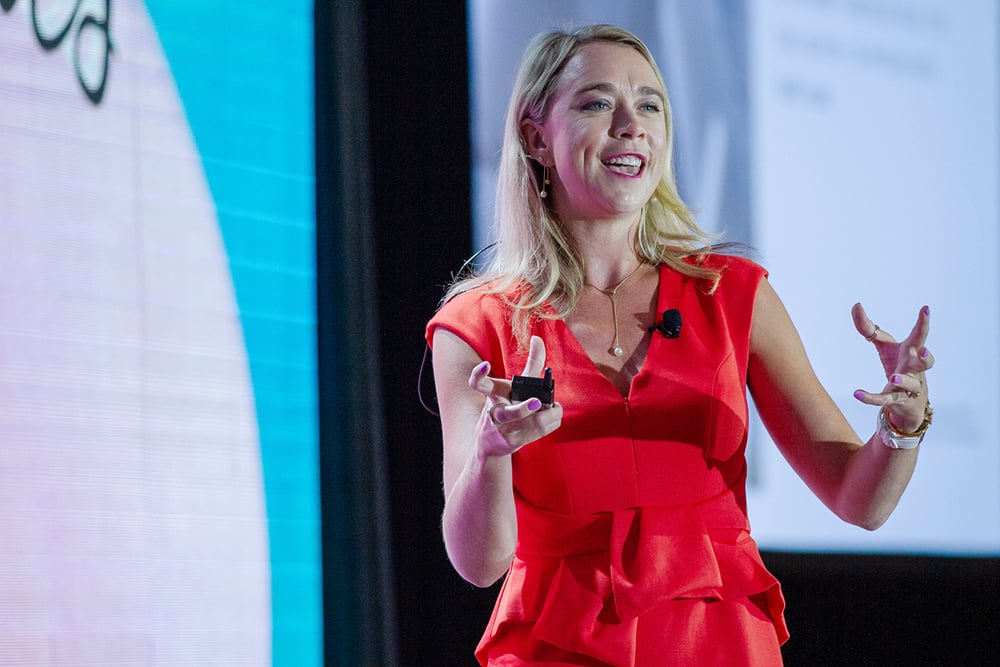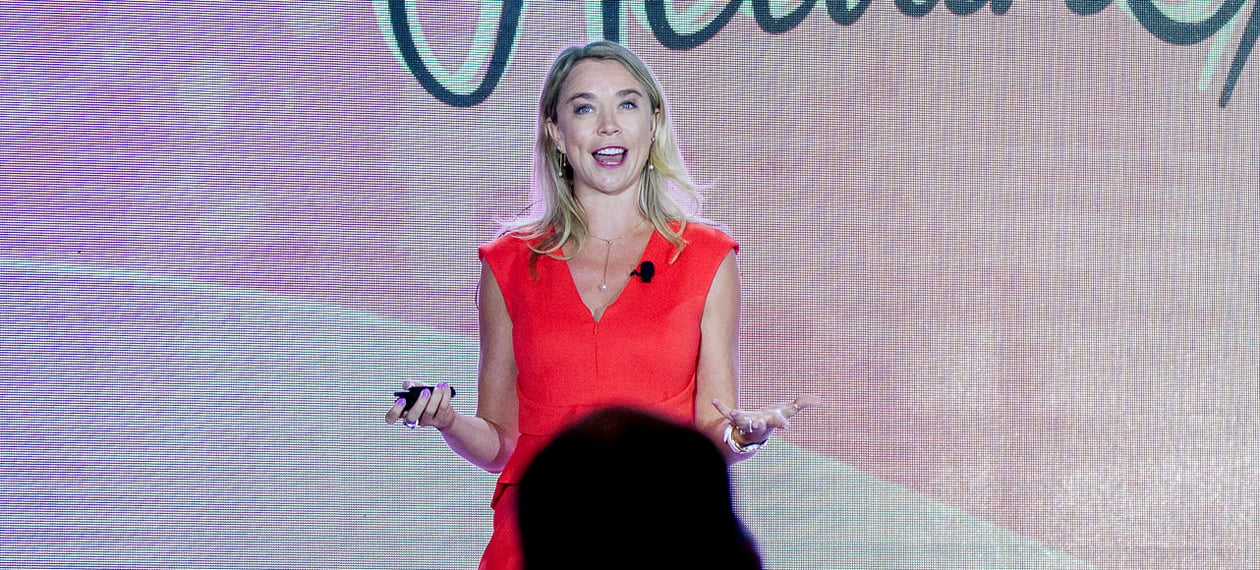If you take nothing else away from the talk given by Dr. Whitney Austin Gray, Senior Vice President of Delos, at HealthSpaces, then know this: Humanity has been challenged to adapt to our modern way of working where we spend 90% of our time indoors, and an average of 90,000 hours of our life at work. Although we have protected ourselves from the more obvious threats of malnourishment, food allocation, predators, and infectious disease, we are now faced with the less obvious threats of stress and burnout. In this way, we have maladapted to our modern environments with mental well-being as a leading indicator.In other words, our nation is not well.
Dr. Gray was specifically talking about wellness of the mind, a critical component of overall wellness that is often overlooked when other physical measures of wellness can be neatly checked off a list.
Specifically, she is referring to stress, the silent killer. She tells the story of "Sheila," who hits snooze on her alarm clock every morning, starts her day with a huge cup of coffee just to get the caffeine kick, skips the gym because she has no time, gets stuck in rush hour traffic because she hit snooze too many times, missed the first hour of quiet productivity in the morning before other people start coming into the office and constantly interrupting her, and leaves work physically and emotionally tired just to sit in rush hour traffic on the way home and do it all again the next day. There is no reprieve from the relentless daily stress that accumulates day after day.
Sound familiar? It should. In a global study, 30,000 adults were surveyed and results found that stress is the number one issue in workplaces.
"Workplace stress is the new secondhand smoke," she said. "It has a cumulative impact over time, just like second hand smoke."
Feel the Burn(out)
So, when you do what Sheila does day in and day out, it has a cumulative negative impact. In fact, Dr. Gray further explained, in just four to eight weeks of continued stress, it can effect your actual DNA. Weight loss (and gain) is affected by stress. And stress leads to burnout.
Burnout means exhaustion, cynicism, and inefficiency. In Sweden, Dr. Gray said, they have ways of predetermining burnout. There is nothing like that in America. In the U.S., burnout costs $125-190 billion in healthcare spending annually—roughly equivalent to New Zealand's GDP.
"We went from the era of infectious disease to the era of chronic disease, and now we are in the era of mental disease with upwards of $190 billion in healthcare costs related to burnout," she said.
In a study by Kronos, 63% of registered nurses in the U.S. reported experiencing burnout, affecting patient care as well as patient satisfaction. But overwhelming numbers reporting excessive workloads and excessive fatigue from 12-hour shifts, in our culture we tend to blame the victim—it's your fault that your tired and stressed, and your responsibility to fix it.
Dr. Gray argued that instead, we need to look at how we can design for mental well-being. How does our built environment contribute to, or counteract, our stress? She stated that instead of further hindering our mental well-being, buildings can be designed to enhance it.
Designing Buildings to Combat Burnout
Delos, a wellness real estate and technology company, pioneered the WELL Building Standard. Launched in 2014, it is the first building certification in the world focused on human health. They have 1,002 registered projects and 190.2 million registered square feet in 36 countries (as of October 2018).
There are seven main concepts in Version 1 of the WELL Building Standard: air, water, nourishment, light, fitness, comfort, and mind.
For the mind component, the WELL Building Standard acknowledges that mental health is critical to survival, so what can be done in the built environment to address stress its chronic manifestation, burnout?
They key is to allow people to adapt and give them the power to control their own environment as they need to.
"We're not going to design a building that is perfect for everyone at all points in the day," Dr. Gray said, "but we can allow them to have control."
Giving people control over their environments means have adaptable spaces that they can use at different points during the day as their needs change. It means having dedicated "sleep zones" so when afternoon fatigue sets in, people are encouraged to get some rest and recharge. NASA has found 40 minute naps are connected with improved efficacy in their surgeons and pilots…imagine what they can do for the average office worker.
It means have dedicated quiet areas as well as noisy areas, because most people don't want complete silence all day, nor do they want the distraction of noise all day. For this they have "focus zones" as well as "collaboration zones," because for well-being humans need other people. Control over sounds and noise also means offering options like noise blocking, sound masking (with "pink" noise and "brown" noise), and nature-based soundscaping.
Nature-based design is part of the WELL Building Standard, bringing the joy of nature into the indoors as well as the curiosity of finding it, offering areas of respite, and encouraging rejuvenating movement throughout the day.

Well-Being Means More than Health
"Sitting is the new smoking," said Dr. Gray. "Even small movements every hour have a huge effect. Sitting for eight hours or longer decreases life expectancy by 10 years. Physical inactivity is the number four leading cause of death in world."
She concluded, "Well-being is not about being 'not sick.' We're living in buildings meant to protect us but we're not adapting well. We're not recovering, we don't have control, we're not paying attention to our biological cycles, we're not promoting well-being, we're not engaged, we're not stimulated, we're not encouraged to have relationships. So how do you think we're adapting, or failing to adapt?"
It's not enough to have a "healthy building." LEED Platinum Certified is not enough. It's not enough to say you have a healthy building; that is something that must be demonstrated over time through performance, and in doing so that will set the standard that allows people to evolve the best.

Posted by
Collaborate with your Peers!
HealthSpaces is a community for people that plan, design, build and operate spaces where healthcare is delivered.
June 7-9, 2026 | Braselton, GA
Learn More




-4.png)
-Dec-09-2025-05-48-44-4379-PM.png)
-4.png)
-1.png)
-2.png)

Comments